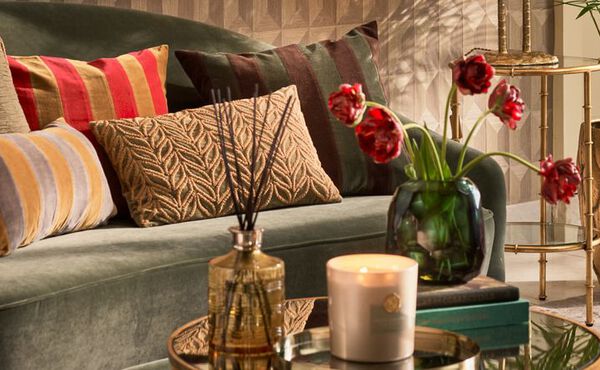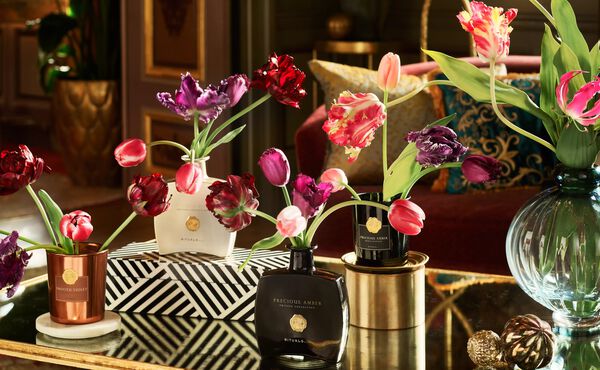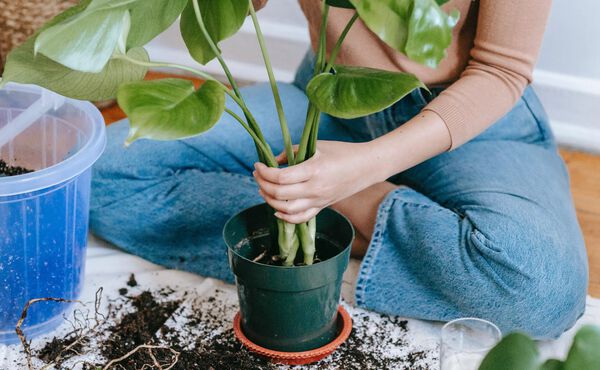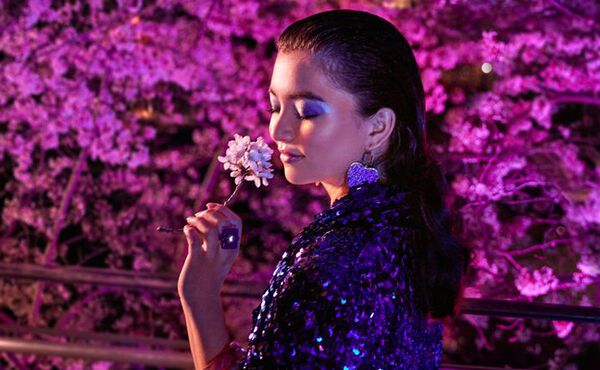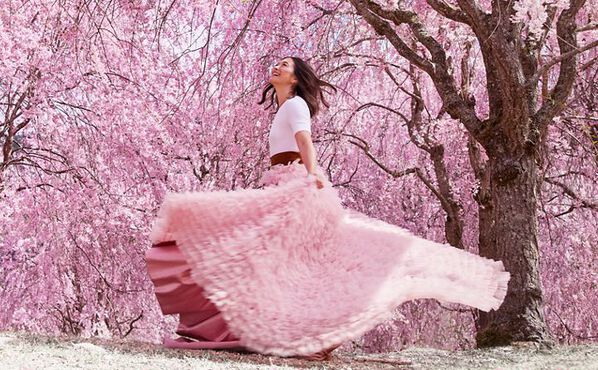Welche Farben bringen uns zum Strahlen? Wir verraten das Geheimnis der Jahreszeiten-Typen und welche Farben Ihre natürliche Schönheit perfekt unterstreichen.
Was wir essen und wie wir uns bewegen beeinflusst, wie wir uns fühlen – und das gilt natürlich auch für unsere Kleidung. Besonders für die Farben, die wir tragen. Während manche uns Energie verleihen, können andere bei uns ein etwas lustloses Gefühl hinterlassen. Das gilt speziell dann, wenn wir uns fragen, welche Farben uns überhaupt stehen.
Zum Glück beantwortet die Theorie der Jahreszeiten-Typen diese Frage. Die Theorie basiert auf der Farbpsychologie. Bei der Analyse des Jahreszeiten-Typs finden wir heraus, zu welcher von vier Farbpaletten unser natürlicher Teint am besten passt: Frühling, Sommer, Herbst oder Winter. Jede Jahreszeiten-Palette umfasst bestimmte Farbtöne, die besonders gut zu unserem Haar, unserer Haut und zur Augenfarbe passen. Mit diesen Farben können wir unseren Style optimieren und Selbstvertrauen gewinnen.
Möchten Sie mehr erfahren? Lesen Sie weiter und entdecken Sie Expertentipps zu Ihrem Jahreszeiten-Typ sowie einfache Möglichkeiten, Ihre Garderobe für mehr Selbstvertrauen zu optimieren.
.jpg?sw=600&sh=370&sm=fit&cx=0&cy=0&cw=728&ch=449&sfrm=jpg)
Die Jahreszeiten-Typen
Beginnen wir am Anfang. Das Konzept der Jahreszeiten-Typen in der Mode kann bis in die 1920er-Jahre zurückverfolgt werden. Der Künstler und Dozent Johannes Itten, eine Schlüsselfigur des Bauhaus in Deutschland, beobachtete, dass seine Studenten harmonischere Designs entwarfen, wenn sie Farben verwendeten, die ihre eigenen, natürlichen Farbtöne widerspiegelten. Im Jahr 1980 erweiterte die Farbtheoretikerin Suzanne Caygill die Theorie um die Prinzipien der Farbpsychologie, bevor die Farbtypberaterin Carole Jackson ihr einflussreiches Buch Color Me Beautiful. Entdecken Sie Ihre natürliche Schönheit durch Ihre Farben! schrieb. Mit dem Buch wurde die Idee bekannt gemacht, sich in Übereinstimmung mit den Farbpaletten Frühjahr, Sommer, Herbst oder Winter zu kleiden, basierend auf dem Hautton, der Haar- und Augenfarbe.
Mit einem Spektrum warmer und kühler Farbtöne sind die Jahreszeiten-Paletten so entwickelt, dass sie unsere natürliche Schönheit unterstreichen und uns die Entscheidung erleichtern, was wir tragen sollten. „Wenn Sie die zu Ihnen passenden Farben tragen, strahlt Ihre Haut und sie sehen sofort gesünder und jünger aus – Sie gehen aufrechter, beherrschen den Raum und strahlen Selbstbewusstsein aus“, erläutert Jennifer Jones, Gründerin von Jennifer Jones Styling.
„Die optimalen Farben zu finden, kann uns stärken“, fügt sie hinzu. „Sie müssen sich nicht mehr fragen, ob sie die richtigen Farbentscheidungen getroffen haben – sie entscheiden sich immer sofort für die richtige Palette. Auch wird Ihnen die große Auswahl nicht mehr zu schaffen machen, da Sie sofort wissen, was Sie brauchen und wie sie es finden.“
Der passende Jahreszeiten-Typ
Laut Jones, die Frauen durch individuelle Style-Beratung stärkt, geht es beim Finden des richtigen Jahreszeiten-Typs darum, eine Farbpalette zu finden, die zum Grundton der Haut und zu Ihren Eigenschaften passt. Ein wenig wie das Finden der richtigen Foundation.
„In der Regel können wir fast alle Farben tragen, doch es sind die Schattierungen und Farbtöne, die wirklich zählen“, erklärt sie. „Versuchen Sie die Farbfamilie zu vermeiden, die genau Ihrem Gegenteil entspricht. Bleiben Sie beispielsweise bei warmen Farben, wenn Sie ein Herbst- oder Frühjahrstyp sind, und bei kühlen Farben, wenn Sie ein Winter- oder Sommertyp sind.“
Mit dieser einfachen Anleitung finden Sie Ihren Jahreszeiten-Typ.
FRÜHJAHR
Wenn Sie ein warmes, helles Erscheinungsbild haben, sind Sie vielleicht ein Frühjahrstyp. Diese Jahreszeit ist charakterisiert durch warme Grundtöne der Haut, was von sehr heller Haut mit goldenen Anklängen bis zu tieferem Goldbraun reichen kann. Das Haar kann goldblond, leicht goldbraun oder kräftig honigbraun sein. Die Farbe der Augen kann ein klares Blau, ein lebhaftes Grün, zart haselnussfarben mit goldenen Sprenkeln oder Hellbraun sein. Wenn Sie finden, dass zarte, warme Farben wie Pfirsich, Koralle und helles Moosgrün sie frisch und dynamisch aussehen lassen, ist das Frühjahr höchstwahrscheinlich Ihre Jahreszeit.
Bekannte Frühjahrstypen: Sonam Kapoor, Taylor Swift, Kerry Washington, Emma Stone
SOMMER
Sommertypen haben kühle Grundtöne und Looks mit zarten, gedeckten Farben. Der Hautton kann von blass mit einem Hauch Rosa zu Beige oder einem zarten Braun mit bläulichen Grundtönen reichen, oft wird die Haut nicht besonders braun. Das Haar kann von kühlem Blond bis zu zarten Brauntönen reichen. Die Augen sind in der Regel kühl und zart, zum Beispiel graublau, sanft braun oder grau. Wenn Ihnen zarte Pastellfarben, Lavendel, Schiefergrau und gedeckte Blautöne stehen, sind Sie möglicherweise ein Sommertyp.
Bekannte Sommertypen: Gwyneth Paltrow, Rihanna, Awkwafina, Emily Blunt
HERBST
Herbsttypen strahlen mit warmen Grundtönen und mit kräftigen, erdigen Farben. Die Haut kann Cremeweiß sein, Goldbeige, warm Karamellbraun oder olivfarben sein, oft mit Sommersprossen. Das Haar ist typischerweise dunkel und warm, zum Beispiel ein dunkles Kastanienbraun, Goldbraun oder Schwarz mit warmen Strähnen. Die Augen können dunkelbraun, haselnussfarben oder olivgrün sein. Wenn erdige Farbtöne wie Braunorange, Olivengrün und Goldbraun Sie zum Strahlen bringen, sind Sie wahrscheinlich ein Herbsttyp.
Bekannte Herbsttypen:Beyoncé, Eva Longoria, Mindy Kaling, Victoria Beckham
WINTER
Wintertypen zeigen kühle Grundtöne und einen starken Kontrast zwischen dem Farbton von Haar, Augen und Haut. Die Haut kann porzellanartig sein, olivfarben oder dunkel. Wintertypen werden nicht leicht braun und ihre Haut kann stark mit der Haarfarbe kontrastieren. Das Haar ist in der Regel dunkel – dunkelbraun oder schwarz – oder ein helles Silber- oder Blassblond. Die Augenfarbe ist oft kräftig und klar, zum Beispiel dunkelbraun, schwarz oder auffallend grau. Wenn Sie in kräftigen Farben wie Marineblau, Weiß oder intensivem Rot großartig aussehen, sind Sie ein Wintertyp.
Bekannte Wintertypen: Lucy Liu, Courtney Cox, Lupita Nyong’o, Priyanka Chopra
SO MACHEN SIE DAS BESTE AUS IHREM JAHRESZEITEN-TYP
Jetzt wissen Sie also, welcher Jahreszeiten-Typ Sie sind und können anfangen, die Farbtöne zu tragen, die Sie zum Strahlen bringen. „Am wichtigsten ist die Farbe in der Nähe Ihres Gesichts. Wählen Sie also Tops und Accessoires wie Schmuck, Tücher oder Kopfbedeckungen in der Farbe Ihrer Jahreszeit. Und vergessen Sie nicht das Make-up – ein Lippenstift in einer Ihrer Farben kann Ihr bestes Accessoire sein“, weiß Jones.
„Ein guter Anfang ist, sich die vorhandene Garderobe anzusehen und herauszufinden, was Sie brauchen. Sobald Sie wissen, was Ihnen fehlt, können Sie diese Kleidung in den Farben kaufen, die Ihnen am besten stehen. Im Laufe der Zeit haben Sie immer mehr, das Ihrer Farbpalette entspricht, und alles wird mühelos zusammenpassen.“
Sind Sie fasziniert von den Auswirkungen unterschiedlicher Farben? Dann lesen Sie hier weiter: The power of colour on your well-being
-
Alle Details zeigenCHF 24.90
-
Alle Details zeigenCHF 22.90
-
Alle Details zeigenCHF 43.90
-
Alle Details zeigenCHF 17.90






